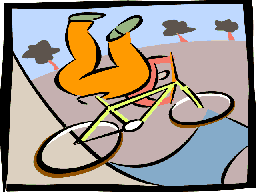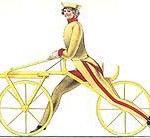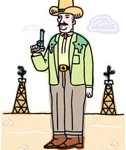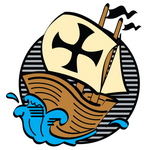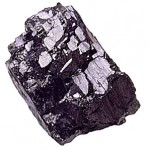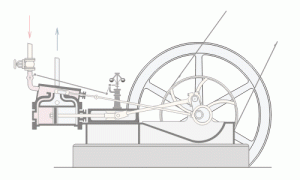(From The Pen & Inkblog on our rejigged and refurbished Crystal Bard Books site)

Usually we order most of our Italian books direct from the publishers, or from our friendly Italian wholesaler, but a couple of times a year I go to buy a few in person, to see what’s popular in the bookshops and to add to our second-hand collection. When possible I go by train, but starting in Northern Ireland, with a largish chunk of sea to navigate before even reaching St Pancras, it tends to be cumbersome and expensive. ( Perhaps we should launch a carbon offset scheme whereby our customers fly and drive with squeaky-clean consciences while paying me to take the train? It would be more practical than a lot of such wheezes, but I somehow doubt whether it would catch on.) Anyway, the trains and ferries resolutely refused to mesh together this time, so I flew with Aer Lingus from Dublin to Rome.
As always, the trip began with a long bus journey (we don’t have a car, either for business or pleasure and your packages are taken to the post office on foot or by bike. Often this one.) One of the oddities of Irish geography is that the direct route from Donegal in the Republic of Ireland to Dublin, its capital (as any fule kno*), is through Enniskillen in Northern Ireland. Consequently, we in Enniskillen can take the (now really quite regular) service with Bus Eireann, the Irish state bus company, and pay the driver in euro, which makes us feel quite cosmopolitan. I like travelling by bus here, the combination of ease, mild eccentricity and potential chaos which makes Ireland, like Italy, interesting if not invariably comfortable.
Dublin airport, sadly, is neither interesting nor particularly comfortable, especially when my flight leaves at seven in the morning, and I don’t feel like paying for an entire night at a hotel for a few paltry hours. Luckily I find an unoccupied banquette in the food hall and clutch at a little sporadic sleep, interrupted by headmistressy security announcements and the most appaling musak I’ve ever heard: covers by a girl band who, though they screeched more or less in tune, seem to have encountered human emotion nowhere outside a Vulcan tourist guide. But then, it came from the direction of McDonald’s, so perhaps it shouldn’t have been such a surprise.
The plane journey next morning was a plain journey, as is, probably, the best that can be hoped for.
In Rome it was raining, fairly hard. It does rain in Italy, at least for the moment, until we manage to turn the Mediterranean into a total desert, though somehow that’s the bit of memory that tends to go blank at suitcase-packing time. Fortunately I’ve been in Italy for long enough to recall some quite spectacular soakings and had a compact umbrella almost handy, stowed away beneath a small warehouse full of bubble wrap. (Lest this should give a false impression of impressive forethought, I should mention here that several small but essential items of clothing which should have been in my bag were, at this moment and until my return, completing their nonchalant airing on the bedroom radiator.)
 From the airport I took the train to Trastevere station (pictured right, on Tuesday in the sun), close to both the hotel and the Sunday morning Porta Portese street market from where I’ve bought books before. My original plan had been to take my bags to the hotel first, but as it was already after twelve, and the market was due to close at one, I thought I had better make my way there straightaway. I was concerned that, in the growing deluge, the booksellers might have already struck camp, but we’re a hardy lot, and they were still man- and womanfully bearing up with the aid of a few sheets of polythene. I purchases a few piles of the drier volumes and remedied my sartorial deficiencies at the modest price three pairs for six euro, thus preserving the frugal nature of the expedition.
From the airport I took the train to Trastevere station (pictured right, on Tuesday in the sun), close to both the hotel and the Sunday morning Porta Portese street market from where I’ve bought books before. My original plan had been to take my bags to the hotel first, but as it was already after twelve, and the market was due to close at one, I thought I had better make my way there straightaway. I was concerned that, in the growing deluge, the booksellers might have already struck camp, but we’re a hardy lot, and they were still man- and womanfully bearing up with the aid of a few sheets of polythene. I purchases a few piles of the drier volumes and remedied my sartorial deficiencies at the modest price three pairs for six euro, thus preserving the frugal nature of the expedition.
Thus encumbered, I made my way carefully to the hotel. Carefully, that is, in part owing to the notoriously random habits of Roman motorists, but principally due to those of their dogs. The canines to be seen in Rome are, on the whole, relatively small, but the evidence suggests that each must deposit near its own bodyweight of waste matter onto the pavements daily. Either that, or it has the consistency of one of those novelty flannels which increase dramatically in size when brought into contact with water.
 Anyway, treading gently, for I trod upon the drains, and, with the aid of my excellent, albeit by now somewhat soggy Giunti street map (available here – that is, not my precious dried-out copy with the sellotape corsetting and the bookshops marked with biro crosses but a nice new one that you can deface in your own inimitable style ) I reached the Rome Nice Room on the Via Daniello Bartoli.
Anyway, treading gently, for I trod upon the drains, and, with the aid of my excellent, albeit by now somewhat soggy Giunti street map (available here – that is, not my precious dried-out copy with the sellotape corsetting and the bookshops marked with biro crosses but a nice new one that you can deface in your own inimitable style ) I reached the Rome Nice Room on the Via Daniello Bartoli.

Rarely can a room have been more appropriately, if less elegantly named. Not only the room, but also the proprietors, were delightful, helpful, interested and happy to switch between Italian and English as the twists and turns of the conversation required. After a quick shower, in which red turned out to mean cold and red hot, in a demonstration of the arbitrary nature of the signifier worthy of Umberto Eco himself, I headed out again to cross the Tevere into the Eternal City itself.
 Roman trams, rather unexpectedly, turned out to be newer and less atmospheric that the ones I took in Milan last year, and ones like this, decorated entirely in adverts for Glee, breathtakingly globalized. However, it glided swiftly and painlessly into the city and deposited me in front of the big Feltrinelli bookshop, so I abandoned, with only a small sigh, my nostalglia for pale wood and creaking iron, and revelled in the efficiency.
Roman trams, rather unexpectedly, turned out to be newer and less atmospheric that the ones I took in Milan last year, and ones like this, decorated entirely in adverts for Glee, breathtakingly globalized. However, it glided swiftly and painlessly into the city and deposited me in front of the big Feltrinelli bookshop, so I abandoned, with only a small sigh, my nostalglia for pale wood and creaking iron, and revelled in the efficiency.
Choosing books at a market stall is largely a matter of luck; anything that isn’t obviously outrageously obscene, dull, outdated or overpriced is worth consideration. By contrast, in a big bookshop almost everything would do; the difficulty is in second-guessing quite what you, our fellow readers and cari clienti, would pounce on most joyfully if you’d been there with me. Parallel texts are always helpful, whether your first language is English or Italian, so I chose a few, including William Blake and T. S. Eliot, together with translations of Bill Bryson’s Story of Nearly Everything and Raymond Chandler’s Lady in the Lake.
 I was, as always, acutely conscious of Aer Lingus baggage allowances and of the fact that I had another full day in Rome on Monday, so I limited myself to a small collection of newish fiction and, after a vague ramble and brief conversation with the cats of the Torre Argentina, headed back to the Nice Room. One disadvantage of travelling alone is that going out in the evening isn’t much fun, so I’d eaten properly (grilled vegetables and pasta ai funghi) in Trastevere at lunchtime, and just picked up some pecorino, bread, tomatoes and wine to eat in the room in the evening. It gave me the opportunity to remember exactly what Italian television is like, and, for, alas, the two are by no means incompatible, to enjoy the luxury of falling asleep ridiculously early.
I was, as always, acutely conscious of Aer Lingus baggage allowances and of the fact that I had another full day in Rome on Monday, so I limited myself to a small collection of newish fiction and, after a vague ramble and brief conversation with the cats of the Torre Argentina, headed back to the Nice Room. One disadvantage of travelling alone is that going out in the evening isn’t much fun, so I’d eaten properly (grilled vegetables and pasta ai funghi) in Trastevere at lunchtime, and just picked up some pecorino, bread, tomatoes and wine to eat in the room in the evening. It gave me the opportunity to remember exactly what Italian television is like, and, for, alas, the two are by no means incompatible, to enjoy the luxury of falling asleep ridiculously early.
to be continued…
* If this phrase fails to ring distant bells, may we prescribe a short dose of Master Molesworth – just type Willans or Searle into the search box of Crystal Bard Books (sorry, we don’t have any in Italian yet).
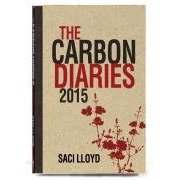 Browsing the teenage fiction section of the library the other day, I came across The Carbon Diaries 2015
Browsing the teenage fiction section of the library the other day, I came across The Carbon Diaries 2015 by Saci Lloyd. I borrowed it, planning to read a few pages and then pass it on to my sons (16 and nearly 13) but it proved impossible to rip it from my cold green hands until I’d got to the end.
, are to be filmed for the BBC, so there will no doubt be much discussion (and dismissive contempt from the usual ‘sceptics’) of Saci Lloyd’s not-quite dystopia. Meanwhile I’ll be interested to see what our boys make of it…










